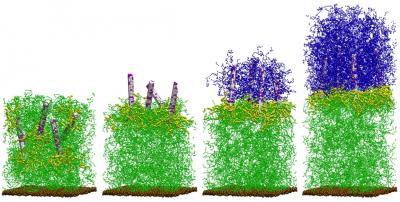New polymers could allow for self-healing materials, the University of Pittsburgh recently reported.
Materials manufactured from the new composites can regenerate themselves when damaged. Results of the Pitt research were recently published in the journal Nano Letters by the American Chemical Society.

The researchers drew inspiration from animals that can regenerate missing or severed limbs. These processes are guided by three unique instruction sets, described by the study authors as initiation, propagation, and termination.
This threefold process, also known as a dynamic cascade, was replicated by researchers in a synthetic material. However, developing the self-healing composite was no easy feat. Because animals and other living organisms can transport building materials through a circulatory system, it is relatively simple for an organism to transport the materials it needs to a regeneration site. However, synthetic materials don’t have such systems.
To create a sensor that initiated and controlled the regeneration process, researchers created a hybrid material featuring nanorods embedded inside a polymer gel. This composite is then saturated with a solution contain cross-linkers and monomers, allowing for a synthetic replica of a biological cascade.
Because the functionalized chains on nanorods keeps them localized at the interface, the initiator sites along the surface of a rod can trigger the desired polymerization process with the crosslinker and monitors in the solution. Each of the nanorods has a diameter of 10 nanometers.
As the next step, researchers hope to improve the binding between new and older gels. To make this possible, researchers once again looked to nature. "One sequoia tree will have a shallow root system, but when they grow in numbers, the root systems intertwine to provide support and contribute to their tremendous growth," states Dr. Anna Balazs, principal investigator.
”While others have developed materials that can mend small defects, there is no published research regarding systems that can regenerate bulk sections of a severed material. This has a tremendous impact on sustainability because you could potentially extend the lifetime of a material by giving it the ability to regrow when damaged.”





